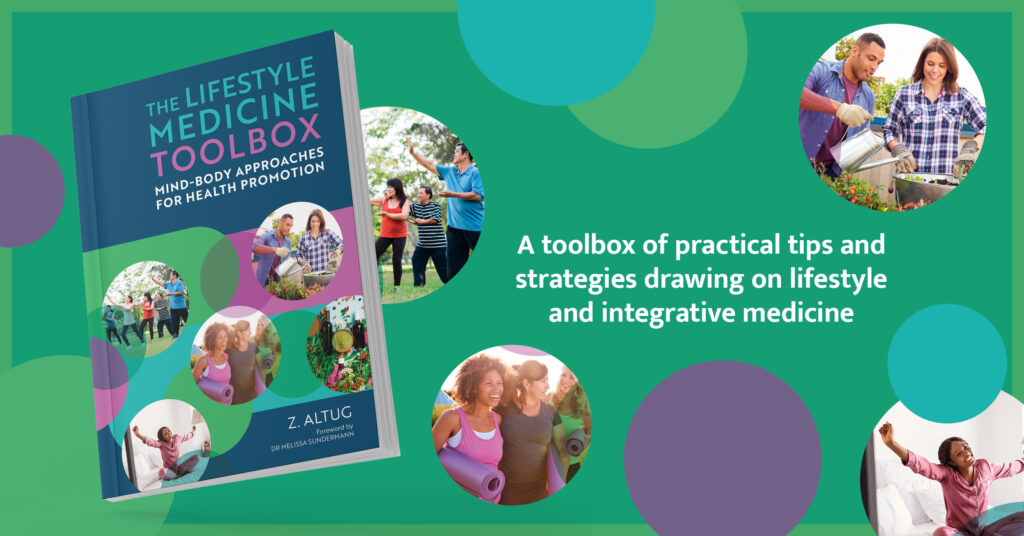Let There Be Light In Your Lifestyle Medicine Toolbox

This blog post was written by Ziya “Z” Altug, PT, DPT, MS, OCS, CSCS
It is well established that circadian rhythms can impact our overall wellbeing. How can you increase light exposure for overall wellness for your patients and clients?
- Engage in morning outdoor activities such as gardening in your backyard.
- Engage in morning outdoor exercise such as walking, hiking, or biking.
- Remodel your home to add more windows or skylights.
- Place your home or work computer so it is near a window (but avoid direct glare).
- Eat breakfast near a window or on your patio, porch, or balcony.
Selected Sources:
- Figueiro MG, Nagare R, Price L. Non-visual effects of light: how to use light to promote circadian entrainment and elicit alertness. Lighting Research & Technology. 2018;50(1):38–62.
- Turner PL, Mainster MA. Circadian photoreception: Ageing and the eye’s important role in systemic health. British Journal of Ophthalmology. 2008;92(11):1439–1444.
Keep reading for an excerpt from Chapter 10: Nature-Based Therapies from The Lifestyle Medicine Toolbox by Z. Altug.
Can Sunshine Affect Health?
According to Venes (2021), heliotherapy is “exposure to sunlight” (p.1106), while
phototherapy is “exposure to sunlight or to ultraviolet light” (p.1852) for therapeutic
purposes. An article in JAMA Dermatology (Aldahan et al. 2016) indicates
that sun worship has been a part of many cultures. For instance, the Chinese
integrated the morning sun into tai chi practice and yoga includes the Sun
Salutation.
Sensible sunshine and sunlight exposure may improve health, enhance
mood, control infections, improve life expectancy, reduce cognitive impairment,
enhance immune system function, and serve as a source of vitamin D (Amichai
et al. 2014; An et al. 2016; Baggerly et al. 2015; Fahimipour et al. 2018; Hobday
and Cason 2009; Hobday and Dancer 2013; Holick 2004; Holick 2016; Kent et
al. 2009; Lindqvist et al. 2016; McCullough and Lehrer 2018; Schuit et al. 2020;
Tang et al. 2021; Wacker and Holick 2013).
However, it should be noted that not everyone can be in the sun due to a
medical condition, medications, or sensitivity. Professor Michael Holick, PhD,
MD recommends limited and sensible sunshine exposure (Holick 2010). After
sensible sun exposure, the key is to cover up with sun protective clothing that
may include a wide-brimmed hat, long-sleeve shirt and pants, and sunscreen.
See the products section at the end of this chapter for sun-protective clothing
websites.
CLINICAL TIP: AIR POLLUTION AND PHYSICAL ACTIVITY
To minimize exposure to air pollution during physical activity, consider the
following strategies (Giorgini et al. 2016; Tainio et al. 2021):
- Walk, run, or bike away from roads with heavy traffic.
- Exercise or train during times of reduced traffic volume.
- Exercise in your backyard or patio.
- If weather permits, open windows when exercising in your home to provide
adequate ventilation. - Engage in physical activities at a local park, trail, lake, or ocean.
- Get involved in local legislation to reduce community air pollution.
If you are interested in learning more about this topic and others, please see the Lifestyle Medicine Toolbox book from Jessica Kingsley Publishers (2024). For additional information, see the www.lifestylemedicinetoolbox.com.